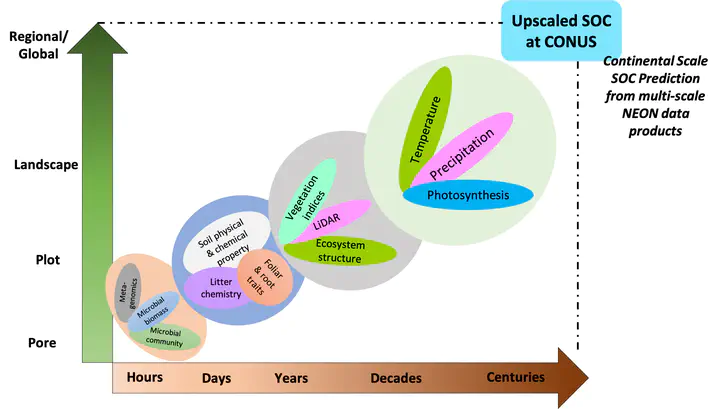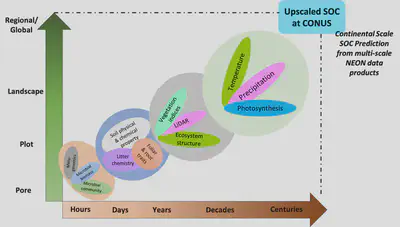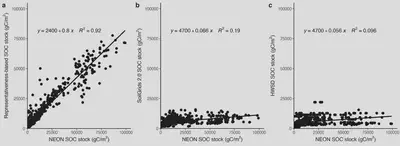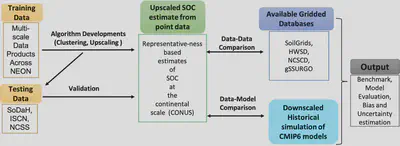Upscaling soil organic carbon measurements at the continental scale by understanding emergent ecosystem properties and spatial representativeness analysis

PI: Debjani Sihi
Co-PI: Samantha Weintraub, National Ecological Observatory Network
Collaborator: Jitendra Kumar, Oak Ridge National Laboratory
Total Funding: $300,000
Brief description of the project and preliminary results:
Soil represents a potentially large sink for atmospheric carbon dioxide (CO2). However, the permanence of this land C sink under future climatic conditions is questionable, and it is unclear if soils will continue to sequester C or if they will instead become a large net C source. Resolving this question is complicated by uncertainty in both measurements and models. Estimates of soil organic carbon (SOC) stocks at regional and global scales don’t match across existing gridded databases such as SoilGrids, Harmonized World Soil Database (HWSD), and Northern Circumpolar Soil Carbon Database (NCSCD). By leveraging an ecological regionalization approach (aka representativeness analysis), we are extrapolating and/or interpolating point-scale SOC measurements from a spatial constellation of NEON (National Ecological Observatory Network) terrestrial sites to the conterminous United States (CONUS). We are coupling data collected across scales and multiple disciplines with an array of multivariate clustering (k-means clustering, ensemble clustering) and machine-learning (convolutional neural network, artificial neural network) algorithms.


We will validate our algorithms developed with NEON data with other point-scale data like SoDaH (SOils DAta Harmonization database) and ISNC (International Soil Carbon Network). We will evaluate the spatial mismatch of derived representativeness-based SOC regional maps for CONUS with existing gridded databases: SoilGrids, HWSD, NCSCD, and gridded U.S. Soil Survey Geographic Database (gSSURGO). We aim to provide robust (and scalable) estimates of SOC for CONUS, which will enable the diagnosis of terrestrial C cycle processes in ecosystem and Earth system models (ESMs).
Related Presentation:
Sihi, D., Kumar, J., Wang Z.*, and Weintraub, S. Upscaling soil organic carbon measurements from NEON terrestrial sites to CONUS using a multivariate quantitative method. American Geophysical Union Fall Meeting, New Orleans, LA, Dec 13-17, 2021.
Sihi, D., Kumar, J., Wang, Z.*, & Weintraub-Leff, S. R. (2021, December). Upscaling Soil Organic Carbon Measurements from NEON Terrestrial Sites to CONUS using a Multivariate Quantitative Method. In AGU Fall Meeting 2021 (INVITED).
Sihi, D., Kumar, J., Wang, Z.*, & Weintraub-Leff, S. R. (2022, February). Upscaling Soil Organic Carbon Measurements at the continental scale by multivariate clustering analysis. In the US DOE’s RUBISCO SOC Working group meeting (INVITED).
Wang, Z.*, Sihi, D., Kumar, J., & Weintraub-Leff, S. R. (2022, May). Upscaling Soil Organic Carbon Measurements using a Multivariate Quantitative Method. In the 9th Annual Southeastern Biogeochemistry Symposium.
Kolisetti, A.#, Sihi, D., Sinsuan, A. F., Bausemer, P. D. (2022, April). Evaluating microbial necromass as a proxy for soil carbon sequestration. In the 9th Annual Southeastern Biogeochemistry Symposium.
* post-doctoral trainee # undergrad student